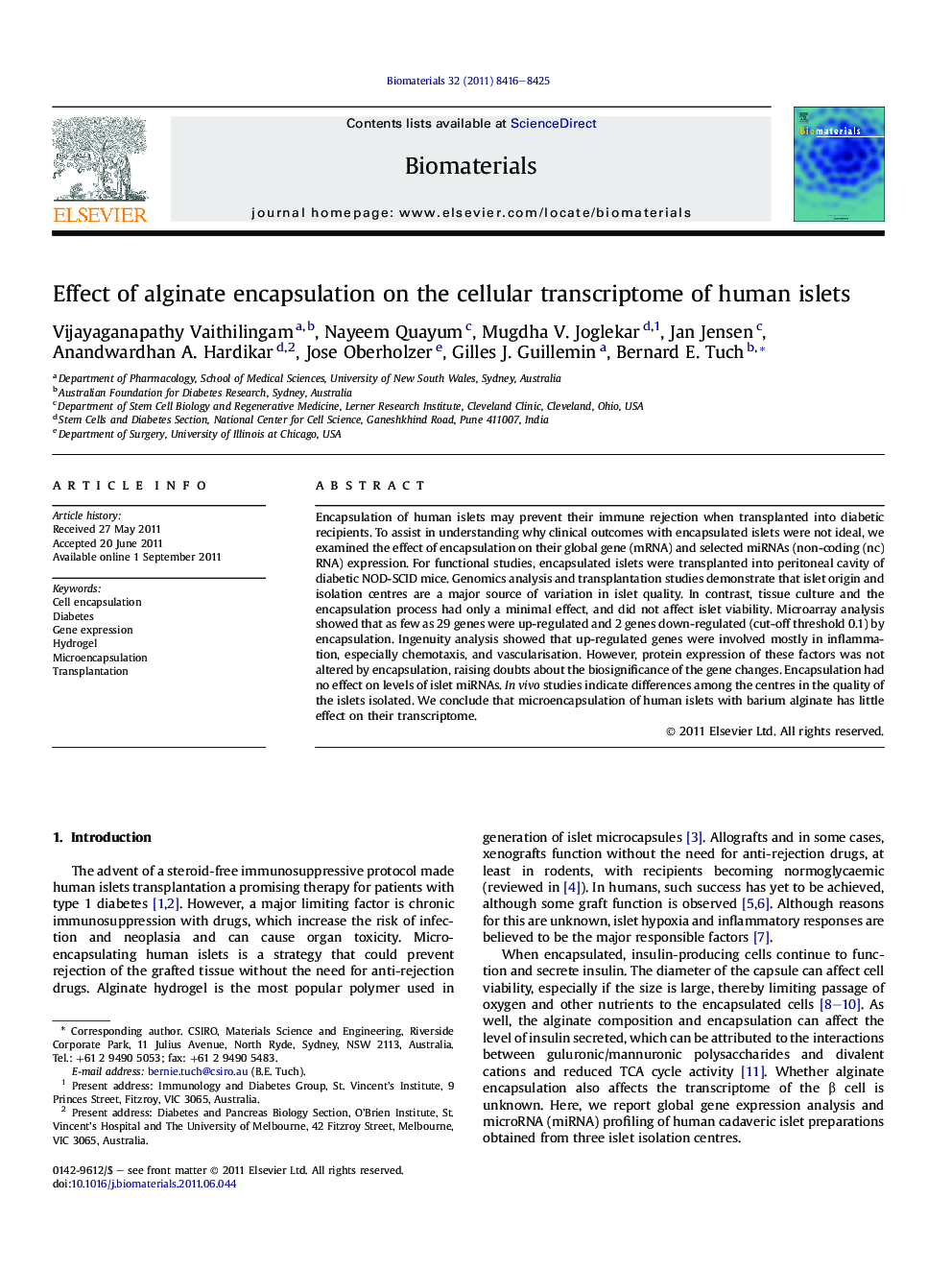| Article ID | Journal | Published Year | Pages | File Type |
|---|---|---|---|---|
| 7233 | Biomaterials | 2011 | 10 Pages |
Encapsulation of human islets may prevent their immune rejection when transplanted into diabetic recipients. To assist in understanding why clinical outcomes with encapsulated islets were not ideal, we examined the effect of encapsulation on their global gene (mRNA) and selected miRNAs (non-coding (nc)RNA) expression. For functional studies, encapsulated islets were transplanted into peritoneal cavity of diabetic NOD-SCID mice. Genomics analysis and transplantation studies demonstrate that islet origin and isolation centres are a major source of variation in islet quality. In contrast, tissue culture and the encapsulation process had only a minimal effect, and did not affect islet viability. Microarray analysis showed that as few as 29 genes were up-regulated and 2 genes down-regulated (cut-off threshold 0.1) by encapsulation. Ingenuity analysis showed that up-regulated genes were involved mostly in inflammation, especially chemotaxis, and vascularisation. However, protein expression of these factors was not altered by encapsulation, raising doubts about the biosignificance of the gene changes. Encapsulation had no effect on levels of islet miRNAs. In vivo studies indicate differences among the centres in the quality of the islets isolated. We conclude that microencapsulation of human islets with barium alginate has little effect on their transcriptome.
